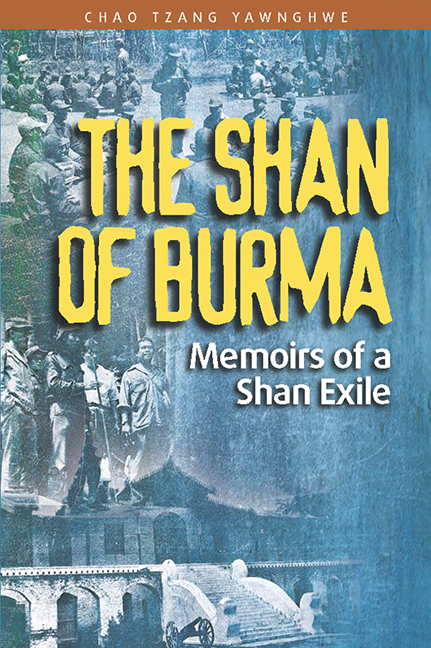1 - A Native of the Shan Hills
from PART ONE - AN AUTOBIOGRAPHICAL INTRODUCTION
Published online by Cambridge University Press: 21 October 2015
Summary
The Early Years
I was born in 1939 in the Federated Shan States, then under the British flag, in a princely manor — the Yawnghwe Haw (Shan for Yawnghwe Palace). My birth took place in a temporary hut in the northern garden of the palace, built specifically for childbirth as was customary among Shan ruling families. My earliest memories are of World War II, of delicious Japanese rice-cakes, bespectacled Japanese officers with long swords and shining boots, sounds of aeroplanes, being carried by adults in the dark of night to earthern bombshelters, and looks of fear and uncertainty on adult faces. Then, the balmy days in the Inle Lake, and always on the move, we children enjoyed running across green and fragrant padi fields, hiding in cool bamboo groves, and swimming in the lake. Japanese soldiers often appeared, but so did, I recall vividly, two men with blue eyes and red hair clad in green (in contrast to the dusty yellow of Japanese uniforms). They were, we were told, men belonging to the Maha-mate army, that is, the Allied forces. We enjoyed the strange texture and taste of cheese and chocolates, and pored over magazines filled with photographs and coloured cartoons (mostly caricatures of Hitler, Mussolini, and Tojo) brought by these strangers.
When the war ended, we children travelled with my mother and relatives from Yawnghwee to Hsenwi, her hometown (a distance of 200 miles by car). On the way, we saw for the first time men who were blacker than the kula (Indians), whose teeth shone in their dark faces like half moons in the starless night. Men of importance (we were told), of different races came and went, many staying for days at Yawnghwe Haw. We, like the adults around us, were greatly amused at seeing Burmese men in sarongs and pink silken caps perched daintily on their heads since men in the Shan State always wore Shan trousers — similar to Chinese ones.
- Type
- Chapter
- Information
- The Shan of BurmaMemoirs of a Shan Exile, pp. 3 - 44Publisher: ISEAS–Yusof Ishak InstitutePrint publication year: 2010

